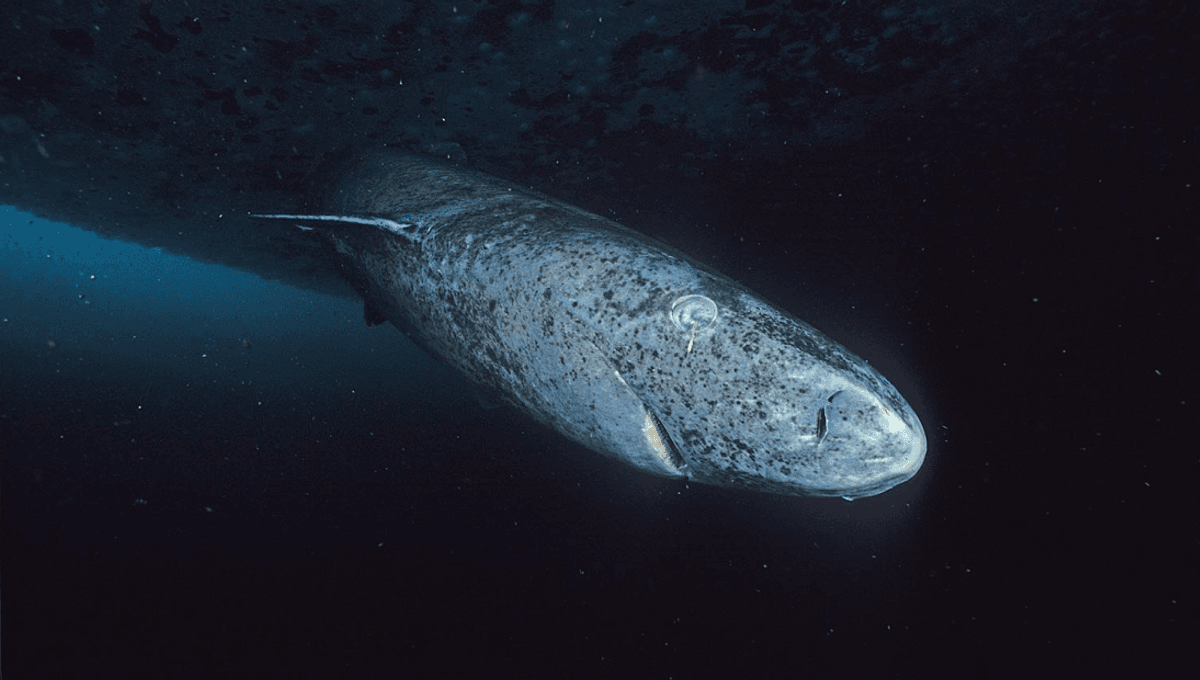Longevity has been creating quite a stir in the world lately, as everyone tries to find the right goo to smear on their faces as they swim wildly toward eternal life—but can we learn the secrets to longevity from nature? And if so, what does the world’s longest-living vertebrate have to say about it?
New experimental research on the topic has discovered that metabolic activity may be the key to Greenland sharks’ incredibly long lives. This increased understanding could help us preserve them on a warming planet, while also potentially informing interventions for human cardiovascular health.
Greenland sharks – known to science as Somniosus microcephaly – have an expected lifespan of at least 270 years, but in the most remarkable cases can live for over 500 years (which, bizarrely, we know thanks to nuclear weapons). It’s long been suggested that the cold environment they live in, combined with the minimal effort it takes for them to move, could be the key – but a team including Ewan Camplisson, a PhD student at the University of Manchester, UK, decided to take a closer look.
In light of the adaptations that allow Greenland sharks to live so long, the team performed enzyme assays on preserved muscle tissue samples. Such samples provide a rare opportunity to study these animals, which are the focus of the University of Copenhagen’s Old and Cold project.

Collection of Greenland shark tissue.
Image Credits: Ewan Camplisson
“During an expedition, the main focus is on catching sharks so we can tag them with both electronic and physical tags. We can then monitor where they swim (via an electronic tag) or record how much they grow if they are caught, so we can identify them via their physical tag,” Camplisson explains to IFLScience.
“Sometimes a shark gets injured during this process and doesn’t survive to be released. To prevent the shark from suffering unnecessarily, we may decide not to put it back in the water, but instead euthanize it ethically. In this case, we collect samples for future work, so that the animal is not wasted in any way and can still be used for science. Any shark remains are also donated to local fishermen or hunters who feed shark meat to their sled dogs, so that none of the animal is wasted.”
The team used storage red muscle samples to measure the metabolic activity of the sharks’ enzymes using a spectrophotometer, looking at a range of different shark ages and environmental temperatures. Surprisingly, they observed no significant variation in muscle metabolic activity between the sharks, indicating that their metabolism does not decline with age – as seen in other animals – and may be a key contributor to their extreme longevity.
“For us, this is important because most animals that show traditional signs of aging show a decrease in the activity of some enzymes and a compensatory increase in others as they get older,” Camplisson said. “This is all part of the natural metabolism, because aging causes it to fail and change over time. The fact that we don’t see this in the Greenland shark suggests that they are not showing this traditional sign of aging.”
The results showed variation between ambient temperatures, indicating that metabolic enzymes were significantly more active where it was warmer. According to Camplisson, this suggests that muscle metabolism is not adapted to the polar environment, otherwise there would be less temperature-related variation in activity.
The team is continuing their work in the hope that a better understanding of Greenland sharks can provide insights into how they are responding to the planet’s rapidly changing climate, and provide insights that could be applied to studying cardiovascular health in humans as we age.
“I have other projects that are all focused on studying aging in the Greenland shark,” Camplisson said. “Looking at changes in metabolism is just one of those projects. However, within this small project, I plan to look at other tissues in the Greenland shark that may have different metabolic profiles, and also look at even more enzymes that will provide even more insight into the metabolism of this incredible species.”
The research will be presented at the annual conference of the Society for Experimental Biology in Prague from July 2 to 5, 2024.
